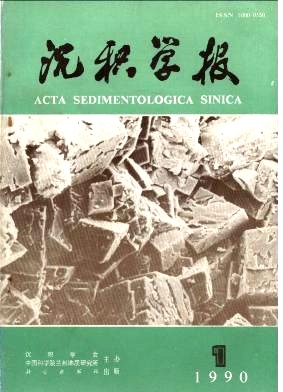GEOCHEMICAL CHARACTERISTICS OF COAL-TYPE OIL IN SOUTHERN MARGIN OF JUNGGAR BASIN
- Received Date: 1989-07-18
- Publish Date: 1990-03-10
Abstract: The Qigufield is located in the depression formed during the Jurassic period and in the southern ma -gin of the Junggar basin. Usually the vitrinite content is the most in macerals of coal and dark mudstonc but the exinite content is more than 20% in the two coalbed, the matrix vitrinite enriching hydrogen s principal in the vitrinite group, which is of great advantage to liquid hydrocarbon being generated in coal measure strata of the depression. The (S1+S2) values analyzed by Rock Eval range from 130 to 164 mg/ g in the gas coal and 99.25% mg/ g in the brown coal from the Xishanyao group (J2x), and those values range between 72:6 and 99.7 mg / g in the dark mudstonc from the Badaowan group (J1b) . They suggest that both coal and mudstone have a better oil-generated productivity. The brown coal (J2x) en -riches vitrinite as high as 90.37% in Sikcshu, Wushu, from the thermoanalogue- change illustration, it can be seen that the oil flow out when R ° values are 0.45 to 1.2%, and the highest peak generated oil is at the stage of R ° ranging from 0.8 to 0.9%., this shows that the vitrinite can not only generate gas but also is a better source material. Generally the content of organic matter from the Jurassic system is less, than 30% in the southern margin of the Junggar basin, and the dcpositional thickness of mudstone is very great, which shows that the potentiality of hydrocarbon generation is high. The vitrinite still dominates in mudstones, and the exinite content reaches 30% and over in macerals of some mudstone, and therefore the dark mudstone of the Jurassic system also is a better oil-generated source material. Judged by the distribution characteristics of biomarkcrs, the crude oil of Qigufield is related to coat and dark mudstone from Xishanyao (J2x) and Badaowan (J1b) group, and the crude oil belong to coal-type oil. The richer C19 to C20 abietic, pimaric tricyclic diterpane and phyllocladane tetracyclic diterpane compounds are detected, which suggests the input of richer terrigenous higher plant. Besides C27 to C32 pentacyclic triterpenoids are also inspected in the crude oil and source rock, and the abundance of 17α (H) 21 β (H) - hopane is the highest in them. The Qigu crude oil is also similar to the Jurassic mudstone in the sterane distribution characteristics, the C29- stigmastane is dominant, C28-ergostane content is low, C27- cholestane is trace, and their distribution concentrates on the same area in the triangular diagram. A series of C27, C29, C30 8.14-secohopane is also determined in the crude oil, they are the products which thermodynamic affect leads the fragile C8-14bond of hopane skeleton to be opened. This series of biomarker is also derived from coal measure strata. Compared the carbon isotopic composition of the coal, mudstone and crude oil, the δ~13C is -24.7 to -32.3‰, -26.6 to -36.5‰ and -25.5 to -29.9‰ respectively. They have a better consistent. On the basis of study on the values of Σ diasterane / Σ sterane, C29α α αS / R+S, C31αβS / S+R, T3/ Tm, OEP and R ° in source rock and crude oil, authors know that petroleum is generated at the low-mature stage of diagenetic process.
| Citation: | Hui Rongyao, Zhang Jizhong, Meng Qianxiang. GEOCHEMICAL CHARACTERISTICS OF COAL-TYPE OIL IN SOUTHERN MARGIN OF JUNGGAR BASIN[J]. Acta Sedimentologica Sinica, 1990, 8(1): 28-34. |






 DownLoad:
DownLoad: